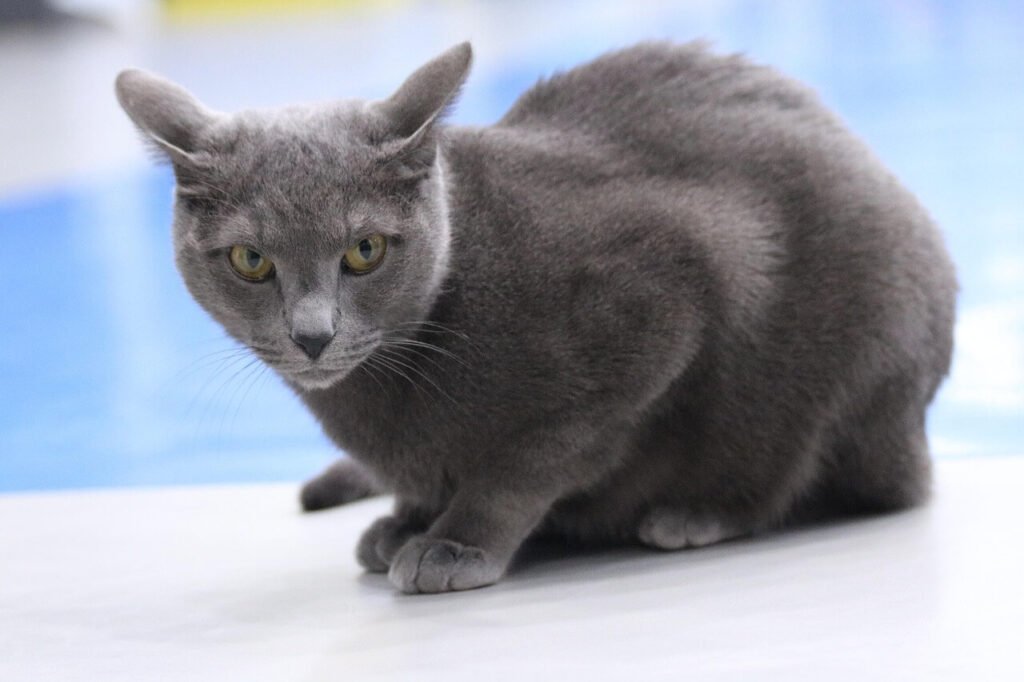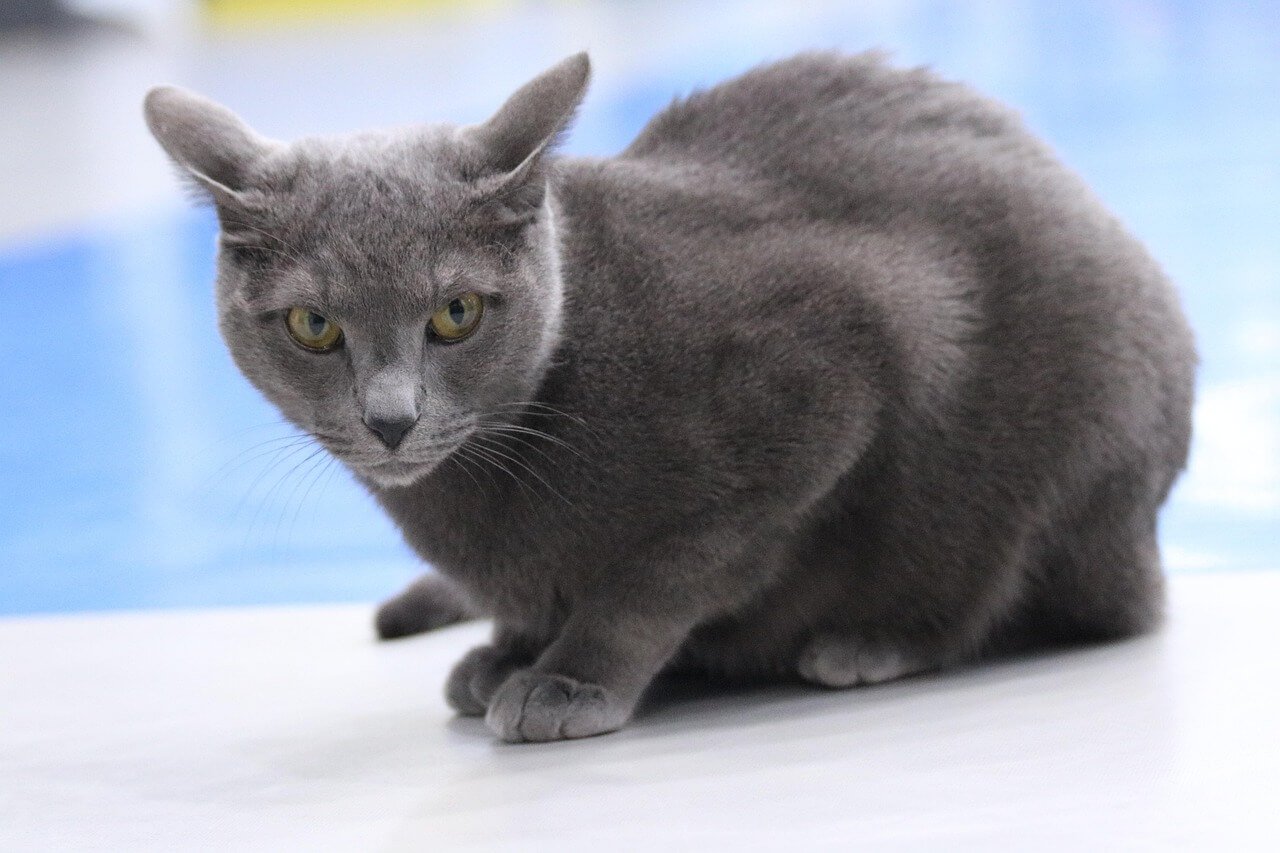Mange in Cats: Understanding, Identifying, and Treating This Skin Condition
Mange in cats is a skin condition caused by parasitic mites that can lead to discomfort, itching, and even hair loss. While mange is less common in cats than in dogs, it’s still a concern for feline owners who notice their pets scratching excessively or developing irritated patches on their skin. Early detection and proper treatment are crucial to prevent the condition from worsening and to ensure your cat’s well-being. In this guide, we’ll explore the causes, symptoms, and effective ways to manage mange in cats, helping you keep your furry friend happy, healthy, and comfortable.
Common Types of Mange in Cats
Understanding the different types of mange is essential for identifying the condition and seeking appropriate treatment. Each type has distinct characteristics and requires specific care.
Demodectic Mange:
Caused by Demodex mites, this type is rare in cats but can occur in those with weakened immune systems. It often leads to patchy hair loss and mild irritation.Sarcoptic Mange:
Also known as scabies, this highly contagious form is caused by Sarcoptes scabiei mites. It results in intense itching, redness, and thickened skin.Notoedric Mange:
Similar to sarcoptic mange, this type is caused by Notoedres cati mites and primarily affects cats. It causes severe itching and crusting around the ears and face.Otodectic Mange (Ear Mites):
Ear mites (Otodectes cynotis ) target the ear canal, leading to excessive scratching, head shaking, and dark discharge resembling coffee grounds.Cheyletiellosis (Walking Dandruff):
Caused by Cheyletiella mites, this condition appears as dandruff-like flakes that “walk” across the skin, accompanied by mild itching.
Recognizing the type of mange affecting your cat is the first step toward effective treatment and relief for your pet.
Symptoms of Mange in Cats
Identifying the signs of mange early can make a significant difference in your cat’s recovery. Look out for these common symptoms to determine if your cat may be suffering from this condition.
Excessive Scratching or Licking:
Persistent scratching or licking of certain areas is often an early indicator of mange, as cats try to relieve irritation caused by mites.Hair Loss:
Patchy or widespread hair loss, especially around the ears, face, or back, can signal mange infestation.Skin Irritation and Redness:
Red, inflamed skin or the presence of sores may indicate an allergic reaction to mite bites or secondary infections.Crusts or Scabs:
Thickened, crusty skin or scabs are common in advanced cases of mange, particularly with notoedric or sarcoptic mange.Behavioral Changes:
Cats with mange may become irritable, lethargic, or withdrawn due to constant discomfort and stress.
If you notice any of these symptoms, consult a veterinarian promptly to confirm the diagnosis and begin treatment.
Check this guide 👉Understanding Cat Skin Conditions: Best 7 Health Tips!
Check this guide 👉How Can I Soothe My Cats Itchy Skin? Best 7 Health Tips!

Preventive Measures for Mange | Treatment Options for Mange |
|---|---|
Regular grooming and hygiene practices | Prescription medications from your vet |
Keeping your cat indoors to avoid mites | Medicated shampoos or topical treatments |
Routine vet check-ups for early detection | Anti-parasitic injections |
Avoiding contact with infected animals | Ear drops for ear mite infestations |
Maintaining a clean living environment | Environmental cleaning to eliminate mites |
How to Prevent Mange in Cats
Prevention is always better than cure when it comes to mange. By taking proactive measures, you can reduce the risk of your cat contracting this uncomfortable condition.
Regular Grooming:
Brush your cat’s fur regularly to remove debris and check for signs of skin issues, such as irritation or parasites.Maintain a Clean Environment:
Wash your cat’s bedding, toys, and food bowls frequently to eliminate potential mites or allergens.Limit Exposure to Infected Animals:
Keep your cat away from other animals showing signs of mange or skin problems to prevent transmission.Use Preventive Treatments:
Ask your vet about flea and tick preventives, which may also help protect against certain types of mites.Monitor Your Cat’s Health:
Schedule regular vet visits to catch any skin issues early and address them before they worsen.
By incorporating these preventive strategies, you can significantly lower the chances of mange affecting your cat.
Natural Remedies to Support Mange Treatment
While veterinary care is essential for treating mange, some natural remedies can complement professional treatment and provide additional relief for your cat.
Coconut Oil:
Apply a small amount of coconut oil to affected areas to soothe irritation and promote healing. Always consult your vet before use.Aloe Vera Gel:
Aloe vera has anti-inflammatory properties that can help reduce redness and itching. Ensure the gel is free from additives or fragrances.Apple Cider Vinegar Rinse:
Dilute apple cider vinegar with water and use it as a gentle rinse to cleanse your cat’s skin. Avoid using it near sensitive areas like the eyes or ears.Dietary Supplements:
Omega-3 fatty acids can improve skin health and support your cat’s immune system during recovery.Herbal Teas as Compresses:
Chamomile or calendula tea compresses can provide soothing relief for irritated skin. Cool the tea completely before application.
While natural remedies can be helpful, they should never replace professional veterinary care. Always consult your vet before trying new treatments.
Additional Tips for Supporting Your Cat’s Recovery
Recovery from mange requires a holistic approach that addresses both physical and emotional well-being. These additional tips can help your cat heal faster and feel more comfortable during treatment.
Provide a Stress-Free Environment:
Create a calm space where your cat can rest without disturbances. Stress can weaken their immune system and slow recovery.Offer Nutritious Meals:
Feed your cat high-quality food rich in vitamins and minerals to boost their immune system and support skin healing.Use Soft Bedding:
Choose soft, hypoallergenic bedding to prevent further irritation and provide comfort for sensitive skin.
By focusing on these supportive measures, you can enhance your cat’s recovery process and improve their overall quality of life.
Signs Your Cat’s Mange is Improving
Monitoring your cat’s progress is essential to ensure the treatment is working effectively. Look for these positive signs that indicate improvement in their condition.
Reduced Scratching:
A noticeable decrease in scratching or licking suggests that the irritation is subsiding.New Hair Growth:
The appearance of new fur in previously bald patches is a strong indicator of healing.Improved Skin Texture:
Smoother, less inflamed skin shows that the mites are being eliminated and the skin is recovering.Increased Energy Levels:
As your cat feels better, they may become more active and playful, signaling an overall improvement in health.No New Symptoms:
The absence of new symptoms, such as sores or redness, means the treatment is successfully controlling the infestation.
These signs confirm that your efforts are paying off and your cat is on the path to full recovery.
Common Mistakes to Avoid When Treating Mange
While treating mange, it’s important to avoid common pitfalls that could delay recovery or worsen the condition. Being aware of these mistakes ensures a smoother healing process for your cat.
Skipping Vet Visits:
Attempting to treat mange without professional guidance can lead to misdiagnosis or ineffective treatment. Always consult a vet.Using Human Products:
Applying human shampoos or creams can irritate your cat’s sensitive skin and cause further complications.Neglecting Environmental Cleaning:
Failing to clean your home thoroughly can allow mites to persist, reinfecting your cat even after treatment.Stopping Treatment Too Early:
Ending treatment prematurely can result in a recurrence of mange. Follow your vet’s instructions until the course is complete.Ignoring Secondary Infections:
Overlooking signs of bacterial infections, such as pus or foul odors, can lead to more severe health issues if left untreated.
Avoiding these mistakes ensures that your cat receives the best possible care and recovers fully from mange.
Frequently Asked Questions About Mange in Cats
Can mange in cats spread to humans?
Some types of mange, such as sarcoptic mange, can cause temporary irritation in humans but do not typically thrive on human skin.
Is mange contagious between cats?
Yes, mange can spread between cats, especially in close quarters. Isolate infected cats to prevent transmission.
How long does it take to treat mange in cats?
Treatment duration varies depending on the type and severity of mange but usually takes several weeks to months for full recovery.
Can mange lead to other health issues?
Untreated mange can result in secondary bacterial infections, so prompt treatment is essential.
Are certain cats more prone to mange?
Kittens, senior cats, and those with weakened immune systems are more susceptible to mange due to their reduced ability to fight off mites.
Caring for Your Cat’s Skin Health
Mange in cats may seem daunting, but with the right knowledge and care, it’s a manageable condition. By staying vigilant for symptoms, practicing preventive measures, and seeking timely veterinary treatment, you can ensure your cat remains healthy and comfortable. Remember, your cat relies on you to notice changes in their behavior or appearance and act accordingly. With patience and dedication, you can help your feline companion overcome mange and enjoy a happy, itch-free life.
Canned Pumpkin for Cat Diarrhea: Best 7 Expert Tips! Natural remedy to firm stools, soothe upset bellies, and support gut health safely.
Can a Cat Give You Scabies? Best 7 Expert Tips! Discover the truth about feline mites, human skin risks, and how to protect yourself—without panic.
Cat Flea vs Human Flea: Best 7 Expert Tips! Discover the truth about bites, species, and how to eliminate infestations for good.
Weird Cat Behaviors: Best 7 Expert Tips! Discover why cats do strange things—and how to understand, not punish, their instincts for a happier home.





